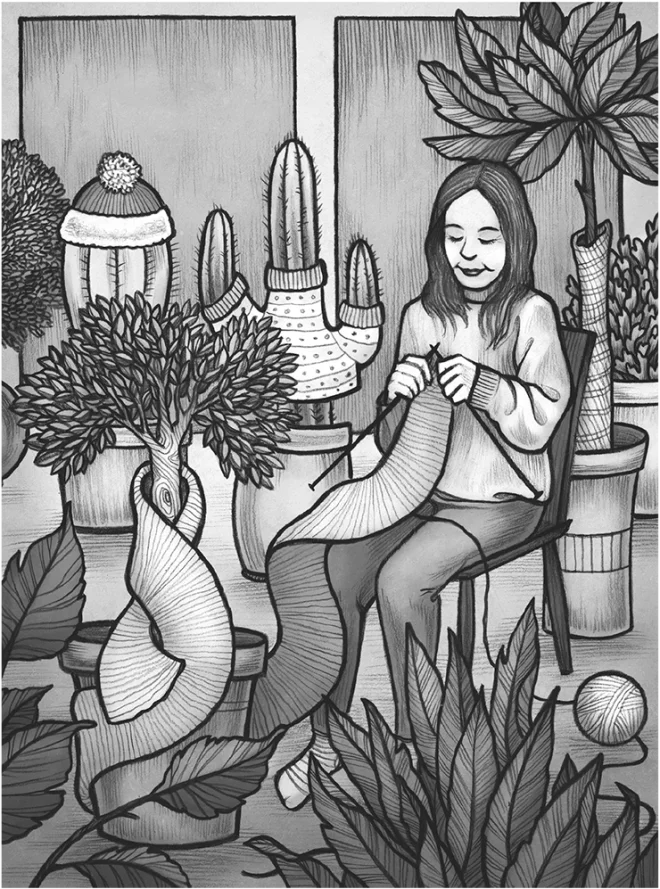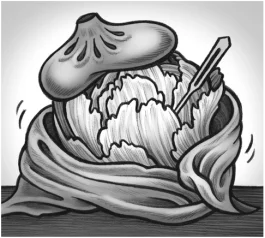
When we took our first child to college, the school hosted a group-therapy session for the parents. We were encouraged to share our sorrow and what we were planning to do next. I quipped that I was planning to get a new sofa—a white sofa. Really, though, I spent little time with the weeping parents of other freshmen. I was off exploring the flora, so lush and exotic on this campus by the California sea, and pocketing seeds of the wild dill that grew seven feet tall at the edge of the water.
When our last child moved out, I still refused to display grief. I put him on the airplane to Argentina with a kiss and instructions to mail me some weird vegetable seeds. I did bawl a bit into my coat sleeve after the plane lifted off. But then I came home and raked leaves with an ebullient sense of relief and freedom. No empty nest syndrome for me! I was a new woman, liberated from the confines of maternity—and excited to have more time for gardening.
I filled my hours with horticultural activities, experimenting with perennials never before seen in our part of the woods. I made dreamy lists from mail-order catalogs, planted unpromising twigs, divided roots, propagated stem cuttings, traded plants with other gardeners, and more.
But I didn’t understand what I was doing—or rather, why I was doing it—until one day when a younger woman who was jogging by stopped to chat.
“That daisy you gave me last year is doing fine,” she said.
“Oh, good!” I said. “They do grow well in this neighborhood.”
“Yes, mine is about twice as big as yours,” she answered.
“Wow! That’s great!” I said.
But that’s not how I felt. I went around sniffing to myself all day. To think that flat-chested little witch who calls a feverfew a daisy—I’m sure it must have been a feverfew that I gave her—could grow it twice as big as mine! She must be drowning it in nitrogen. Probably it will never bloom. To think that snippy little girl who wastes her energy running around the street could grow anything at all! But then Chrysanthemum parthenium is such an invasive weed. I keep it on the outskirts of my garden. I never let it grow in good soil or sunshine.
Then I realized that the blast of anger I was feeling was eerily familiar. I suddenly remembered how I felt, years ago, when the mother of my first grader’s best friend confided to me that her child was reading at the sixth-grade level.
I began to laugh at myself. I was envious of the way some-body else could grow a weed? You’d think it was her child we were talking about!
That’s when it hit me. My tender, maternal affections haven’t gone away. I’ve just transferred them to my plants. Gardening is motherhood gone amok.
In January, my best garden friend and I were sharing how empty we feel now our vegetable beds are deep in snow. She griped about the difficulty of maintaining her greenhouse temperature between 55° and 85°. “Something is running all the time,” she said. “If it’s not the heater, it’s the fan. Our electric bills are off the charts.”
I offered my opinion that her seedlings would do fine with a much broader temperature range. In the back of my mind, I could hear my tough-love parenting voice. “How are they going to learn to stand up for themselves if we don’t let them practice?” I used to say—about the children, not the salad greens.

But then, long after I came home from my friends’ house, at 2:00 a.m., I pulled on my bathrobe and snuck out to my greenhouse to read the thermometer, check on my infant lettuces, and pull the covers up tenderly around the shoulders of my climbing rose. I understand now why I garden. It doesn’t matter how tough I talk. I will always crave a reason to jump out of bed in the middle of the night to check somebody’s temperature and make sure she’s covered up. ❖


 Previous
Previous

